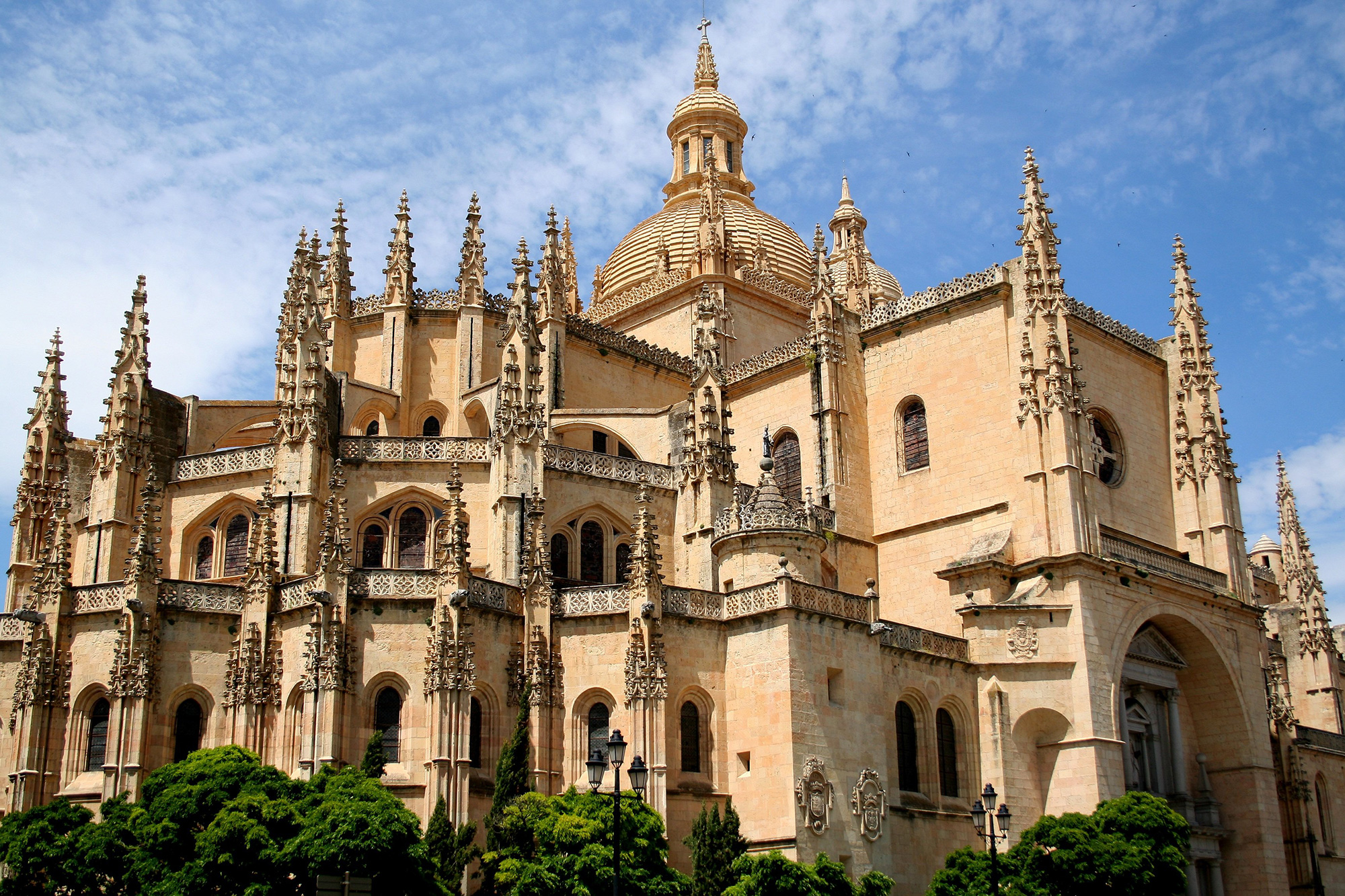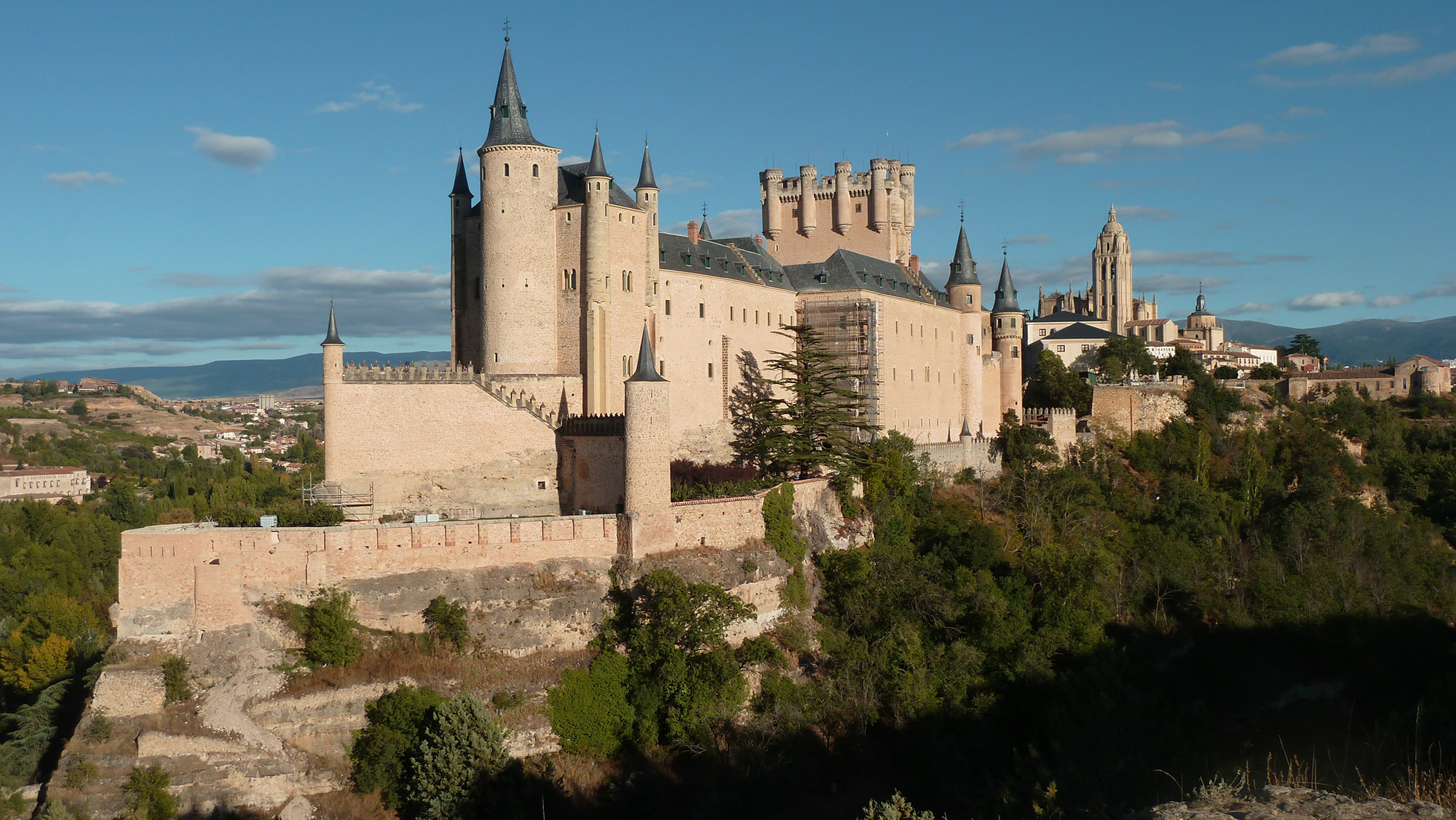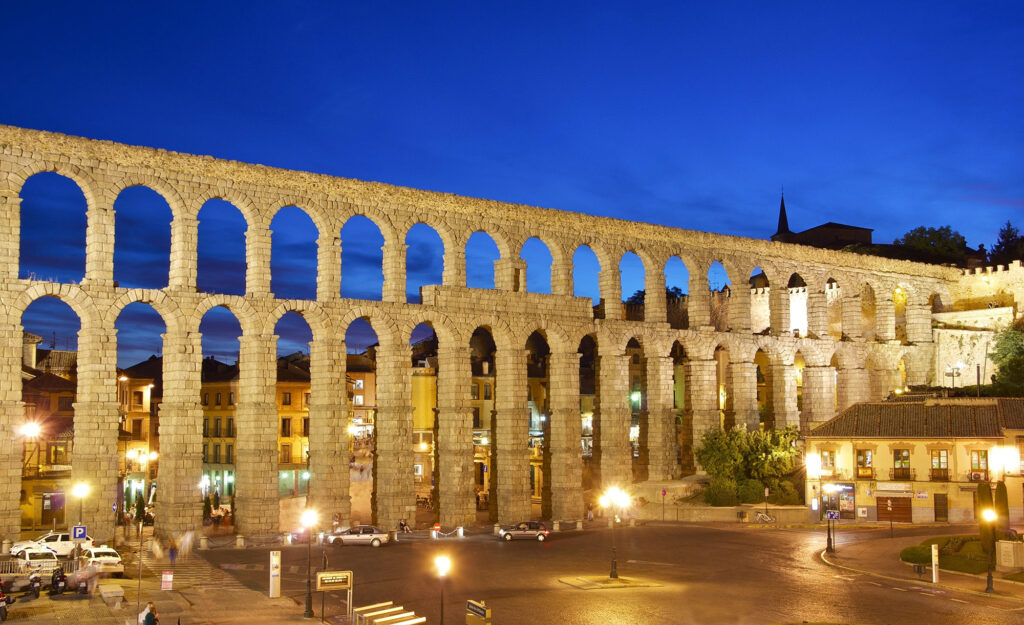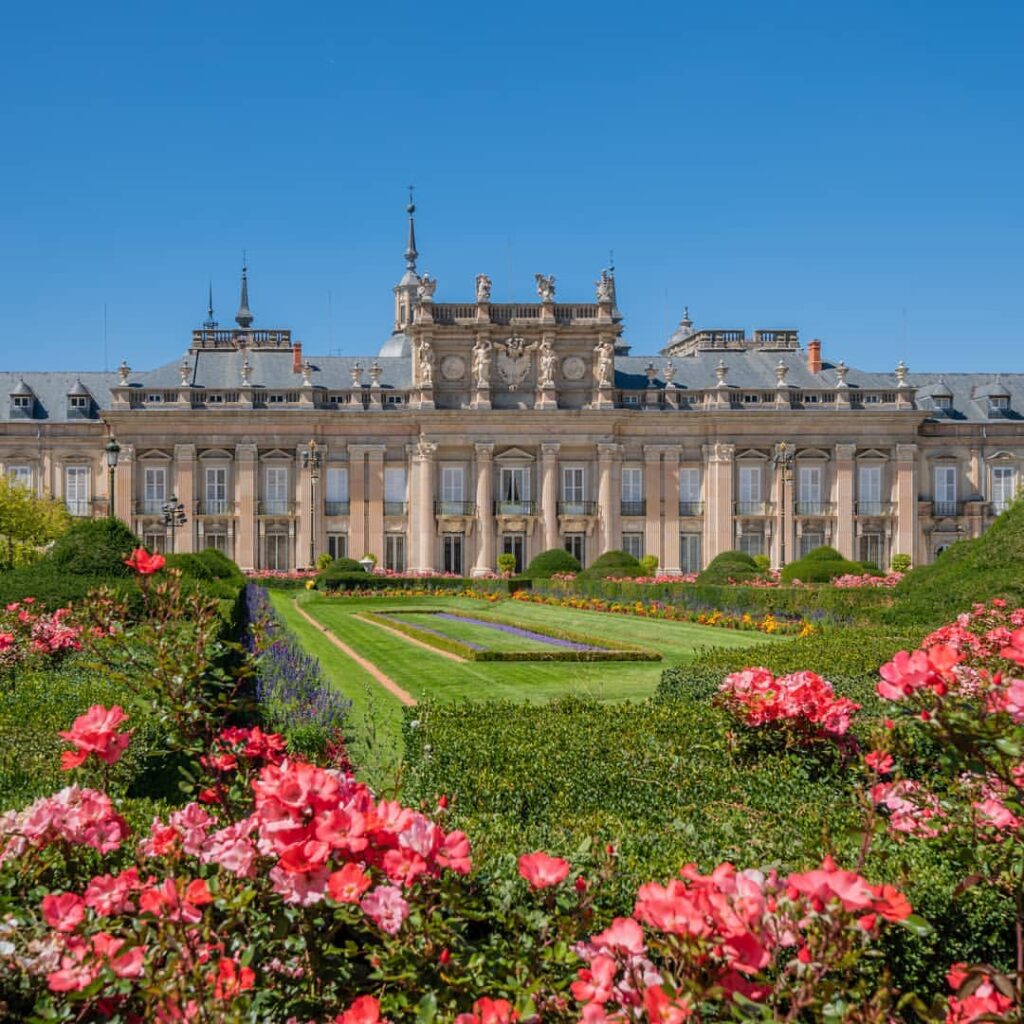Table of Contents
About
Segovia has a population of 154.000 people and is one of the UNESCO World Heritage sites in Spain. Located in the northwest of Madrid, in the central Spain region of Castile and Leon, Segovia is a small historic city that is more than 2000 years old and sits 1000 meters above the sea level.
Segovia, a city of Romance, is the living heritage of the old-time in the enchanting ambiance. The city is home to various historic town walls and monuments, including the fairy-tale castle, the Roman aqueduct, the church Iglesia de la Vera Cruz, cathedrals, and the monasteries endeavoring remarkable views and acknowledging vibrant culture.
The tourist attractions of Segovia are primarily found in its old town and include ancient alleyways, cobblestone streets, and elegant squares.
The city lies in the inner plateau slopes of Sistema Central mountain across the Eresma river and serves as an iconic tourist landmark featuring captivating medieval walls, historic monuments, churches, royal palaces, the gothic cathedrals, and breath-taking views.
Earlier, the city was known as Segobriga but now as Segovia which is of Celtiberian origin. The city had also steeped in the complex history from the 80BC Romans to the Moorish period which started in 711 and Queen Isabella’s coronation in 1474. Today, the city is an essential trading center of wool and textiles and additionally, the place of romance.
History and Culture
Segovia city exhibits a great history of several wars and settlements. The city survived the first-ever settlement, the Celtic possession, and later got captured by Romans in 80 BC. During that period, the city got abandoned after the Islamic invasion of Spain.
For centuries, Segovia has been dealing with various ups and downs, but in the late 18th century, Charles III made an attempt to revive the city that ultimately got destroyed during the war of Independence by French Troops. Finally, Segovia experienced recovery during the 19th century and now is one of the most popular tourist destinations in Spain with relative economic endurance. In terms of culture, Segovia city upholds rich culture in music, theatres, museums, festivals, and other events. Being a UNESCO world heritage site and the vitality of the old Spanish cities, Segovia city offers several historical sightseeings and places to visit, relishing the old feelings.
Things To Do in Segovia
Cathedral de Segovia

Cathedral de Segovia is a Gothic-style cathedral and the last cathedral built in Spain. Commissioned in the 16th century, the cathedral stands adjacent to the Alcazar castle and is surrounded by the old town in the main square of the city – the Plaza Mayor.
Francisco Sabatini carved the cathedral de Segovia and dedicated it to the Virgin of Peace. The cathedral comprises yellow stones in its construction, giving the mesmerizing effect of the tower at 100 meters. It also incorporates the grand Puerta del Perdon entrance amidst gothic grandeur for the visitors to experience harmony and serenity. In addition, the cathedral of Segovia features an ambulatory, three 30 meters high vaults, fine tracery glass windows, a 90 meters high bell tower, and 18 chapels consisting of sculptures, altars, and artworks closed by the grilles in its decorations. The impressive central altarpiece of the chapel is encrusted with jasper, bronze, and marble portraying the figure of the 14th century – Virgen de la Paz. Apart, the cathedral offers 500 antique books of Spain, including the first printed book of Spain – the Sinodal de Aguilafuente – for visitors to explore.
Alcazar de Segovia

The medieval period castle – Alcazar de Segovia – is a fairy-tale-like castle and a UNESCO World Heritage Site in Segovia. Standing on the cliff rock above the two rivers, the castle is the most distinct palace in Spain by virtue of its bow ship-like structure. Originally, the castle was built as a fortress but later served as the state prison, a royal artillery college, a military academy, the royal palace, and the residence of King Alfonso VIII during the 12th century.
Alcazar de Segovia features a chapel, noble rooms, the Hall of Kings, royal chambers, throne rooms, and more in its interior. In it’s exterior you will find a moat, the Herrerian-style courtyard, a drawbridge, and a keep. In addition, the castle also incorporates the John II of Castile’s tower, comprising 156 narrow stairs, a guard room, and four floors offering visitors the magnificent views of the city. The main highlight of the Segovian castle is a 14th-century tower at its entrance – the Torre de Juan II – that is enclosed by 10 curved turrets and offers heart-throbbing sunset views from its top. Today, the castle allows visitors to explore the exclusive furnishing of the period styling arms, armor, as well as tapestries, the Throne Room – Sala del Solio – which is popular for the ceiling design, and the Sala de la Galera, which is known for its arched windows rendering the fascinating landscapes of the river.
The Roman Aqueduct of Segovia

The Roman aqueduct in Segovia UNESCO World Heritage Site and the representation of the city. It is over 1000 years old and offers a magnificent view of the city. Located in the coat of arms of Segovia, the aqueduct was built in 50AD and comprises about 20,400 granite blocks with no use of cement as well as 167 arches in rows.
The aqueduct transports water from the river Rio Frio near the Granja Palace through a canal ending at the underground channel of Alcazar castle. The water first gathers in a tank – named El Caseron – and then flows through a channel to the second tower – named Casa de Aguas. Here it undergoes sedimentation before traveling for another 728 meters to the Alcazar castle. The aqueduct serves as the most captivating and important landmark of the city, as it has been transporting water since the mid 19th century. The Plaza del Azoguejo is located at the aqueduct’s highest point. From 28 meters height you will have a magnificent view over the hub of the old town.
Iglesia de la Vera Cruz

The remarkable Romanesque church of Segovia – Iglesia de la Vera Cruz True Cross – dwells on a deserted road on the outskirts of the historic city. Located in the north of Segovia and established in the 13th century by the Knights Templar, the church is the influence of the Holy Sepulcher church of Jerusalem.
The church is the best-preserved church in the European style in Segovia and comprises a nave with a dodecagonal floor, surrounding the small two-story shrine. The shrine contains a semi-circular sacristy, a square shape tower, and three apses. The church also features semi-circular windows, buttresses, a square floor with a gable roof, and a simple interior with a Mudejar-style vaulting and three semicircular chapels.
At the exterior, Iglesia de la Vera Cruz features a stone staircase that reinforces the impression of a spiritual place with the ancient cypress trees and beautiful gardens surrounding it. In addition, the church allows visitors to explore the Convento de Los Carmelitas Descalzos, the tomb of a poet nearby experiencing peace, calm, and a sense of mysticism.
Palacio Real la Granja

Palacio Real la Granja is a fascinating royal palace of La Granja de San Ildefonso. Located in the nearby hills of Segovia and 11 km from the city, the Palacio real la Granja was commissioned between 1721 and 1739 in the early 18th century in the town of San Ildefonso by the architect Teodoro Ardemans.
As Philip V chose the palace to be modeled on the Chateau de Versailles of Louis XIV, the most captivating palace imitates the Baroque style of the French palace – Palace of Versailles. Palacio Real la Granja incorporates extensive and magnificent gardens in Jardin a la Francaise style along with the sculptural theme fountains of classical mythology in its surrounding. Today the palace is a royal site and the part of the Patrimonio Nacional of Spain that conserves several crown’s palaces and lands.
The Segovian palace features rooms with Carrara marble floor, Japanese Lacquer, ancient paintings, a museum with Flemish tapestries, and crystal chandeliers. It also allows visitors to tour the Throne Room that is influenced by Spanish, French, and Flemish architecture and the exquisite church comprising of a red-marbled tomb of Philip V as well as of his wife, Isabella Farnese.
How to get to Segovia
By Air – Visitors can travel to Madrid in Spain which is the nearest airport to Segovia.
By Train – From the Madrid airport, visitors can take the high-speed trains accessible to Segovia. It will take around 30 minutes.
By Bus – From Madrid, visitors can take a bus from the Moncloa station to the Roman aqueduct. La Sepulvedana is the bus service that takes about an hour to reach Segovia.
